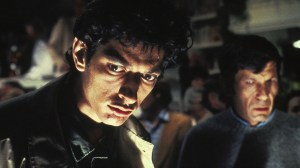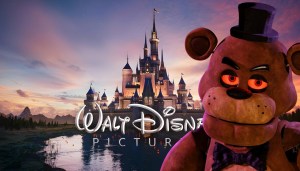It’s an undeniably incredible time to be a horror fan, thanks in large part to the rise of the Internet. Not only have streaming services and digital downloads given us access to obscure and rare titles that previous generations had to track down in video stores, but the rise of social media has allowed us to connect with fellow fans to express our opinions, something previously only possible at conventions and screenings.
Videos by ComicBook.com
While these technological advances have their merits, a major drawback is that something of the communal aspect of the genre is disappearing, as we no longer have to leave the house to have an encounter with an actual human in order to watch a long-forgotten shot-on-video slasher and instead pick up our phones to argue with thousands of people about that film’s merits. The divisiveness and isolation of the horror community needs to be resolved — which can be done if we bring horror hosts, both fresh and familiar, back to the forefront of the genre to unite us for the greater good.

As television sets became staples of every household in the 1950s, movie studios began releasing horror and sci-fi films to networks for broadcast, with broadcasters creating their own hosts to introduce and give context to what the viewer was about to see. Vampira debuted in 1954, played by Maila Nurmin, whose The Vampire Show would set the standard for horror hosts. While her show only ran for a year, Ed Wood cast her in Plan 9 from Outer Space, helping solidify her image in the horror world.
Throughout the ’60s and ’70s, more films became available for broadcast as more networks were created, leading to a massive surge in regional hosts being created, adopting a variety of horror archetypes while injecting witticisms and historical information to give context to the films a viewer was watching. In 1981, Cassandra Peterson debuted her Elvira, Mistress of the Dark character, whose Valley Girl attitude mixed with the gothic look of Vampira, in addition to her sexual innuendos and revealing outfit, led to her becoming not only a horror icon of the ’80s, but an iconic personality whose legacy is just as powerful today.
A number of factors led to Elvira transcending the world of horror and becoming a household name following her debut. Peterson herself previously described that it was the blend of horror films with comedy to sex appeal that made Elvira’s Movie Macabre an experience that an entire family could enjoy, not just something that appealed to devout genre fans.

“The horror hosting aspect with the comedy interjected took the edge off of the horror film, and it also brought new life to old horror films that people have seen, seen, and seen, and wouldn’t normally watch again,” Peterson shared with ComicBook.com. “But now they’re gonna watch them because I’m making jokes about them, I’m pointing out things that happened in the movie that you wouldn’t normally notice.”
“Then it gets a chance for people all to be in one room together watching something and doing something together,” she added. “It seems like an odd choice for that, but [people often] say that to me, ‘Every time I see your show I think of my mom ’cause we always watched it together.’ Or ‘My dad passed away, but this was the one thing that he and I both loved to do together.’”
Throughout the ’90s, both home video and cable networks rose in popularity, leading to video stores stocking larger libraries of horror titles and networks broadcasting uncensored, uninterrupted horror films. Programs featuring horror hosts were no longer necessary for a fan to witness an obscure title, and the sheer number of channels a viewer had to sift through making the discovery of the existing programs more difficult. While this allowed horror fans more avenues to check out films, it meant that horror hosts became far less relevant, a major factor in their demise. Additionally, more households had access to the Internet, allowing horror fans to research the genre extensively, with the insight and history provided by the hosts no longer being the only avenue for a fan to research even the most obscure of titles.
Horror hosts are incredibly resilient though, so while the ’90s saw a massive drop in the number of hosts and the genre’s dependency on them, the more popular hosts remained, though they began to fade in notoriety not only in popular culture, but even within their beloved genre.
One of the most popular ways for movie fans to enjoy movies are streaming services, whether they offer limited horror options like Netflix or Hulu or have a more niche focus like Shudder, which specializes in horror films. This has created a double-edged sword over the past decade, as it has become easier than ever to watch a horror movie, yet has made viewings experiences incredibly isolating. Virtually every horror fan would agree that it is convenient to be able to watch a lesser-known title on any device from any location at any time of the day, not realizing how they are sacrificing the communal experience of digesting that film with your peers when you leave a theater or ask for a recommendation at the video store.
In this way, the Internet has undeniably had a negative impact on the communal horror-watching experience, yet horror fans, much like their beloved on-screen monsters, refuse to accept defeat in the face of destruction.
The Walking Dead debuted on AMC in 2010 and has become one of the biggest TV cultural forces of the decade. The excitement surrounding the series, and the rise of social media, helped birth the concept of livetweeting a movie or TV series that you’re watching. Largely as to avoid learning spoilers about the shocking series after an episode airs, passionate fans tune in to an episode as it airs, despite being able to enjoy the show at their own leisure through video-on-demand services. The various twists and turns of the show’s narrative is what sets it apart from other horror fare, as it creates a sense of urgency to consuming the story. The show has proven that there are audiences who will happily tune in to a certain network at a specific time, knowing that if you have questions, comments, or quips about what you’re seeing, you can check out social media and engage with thousands of other fans all watching the same adventure unfold.
If The Walking Dead can unite fans, why couldn’t the right horror host unite genre fans in the same way?
Sadly, social media also has plenty of drawbacks, even within the horror community as they attempt to discuss the latest movie, show, book, or video game. While it’s easier than ever to find fellow horror fans on any social media platform, it’s also resulted in more toxic conversations.
Whether it be Facebook, Twitter, or Instagram, individuals have to actively choose what opinions, interests, and images best represent them. While an Internet identity and real-life identity often have plenty of overlap, users are putting more thought into how others might perceive this online identity, regardless of what your interests might be. Often the most efficient way of doing so is by removing nuance from your opinions and merely stating your likes and dislikes. One could argue that this has resulted in all of society, not just limited to the horror world, becoming much more antagonistic towards one another, as we have fewer ways to define ourselves with nuance, with opinions boiling down to loving a movie or hating a movie, supporting an idea or being opposed to an idea, and which pieces of art have worth and which don’t.
One of the more damaging ways that the necessity to present yourself online is that every topic boils down to a binary position. A movie is good, or it is bad. The popularity of review aggregator websites like Rotten Tomatoes and Metacritic has cemented these arguments, as even the most nuanced of reviews ultimately gets deemed “Fresh” or “Rotten.” The return of horror hosts can help remind fans that there is an entire spectrum with which to enjoy a film, with hosts highlighting how something that would traditionally make a movie “bad” can be recontextualized so the viewer can appreciate its merits.
The toxicity of online discourse and the isolating experience of on-demand horror watching has been driving a wedge between fans, though one event in 2018 managed to unite horror fans across the country, proving the effectiveness of using social media and viewings parties to create unity among disparate viewers.

Joe Bob Briggs, who hosted Joe Bob’s Drive-In Theater in the ’80s and MonsterVision in the ’90s, announced The Last Drive-In on the streaming service Shudder, which was billed as his final hosting gig which would run for 24 hours. Fans had to tune in to the platform at a specific time to catch his witticisms and insight about the various films, with viewers encouraged to engage with one another on social media. The response to the program was so overwhelming that the streaming service’s servers became overloaded, making it nearly impossible for viewers to even tune in. This was incredibly frustrating to not only viewers, but the service and Briggs himself, yet proved just how desperately the horror community yearned for such an event, allowing us to sit back and witness a film, taking comfort in the fact that there were thousands of viewers across the country enjoying the same exact program they were watching from the comfort of their own homes.
As proven with The Last Drive-In, the horror genre doesn’t have to be black and white. Fans can come together to acknowledge that, while a movie might have its flaws, it isn’t entirely without merit. By engaging with the film as it unfolds and by interacting with the community, even through social media, we can praise what we like and ignore what doesn’t appeal to us. We can see that others connect with and appreciate things we had previously dismissed, allowing us to see other perspectives of the narrative and filmmaking on display. A movie isn’t just good or bad, it is an experience with ebbs and flows that brings the viewer on a journey.
“People want to gather together in groups. And groups that have common interests. And movies are meant to be seen in a group. Movies are communal. Movies are social,” Briggs previously explained to ComicBook.com. “People don’t want to watch movies alone. Despite what Netflix says. Netflix thinks the future is one person at a time, one device at a time, streaming one piece of content that you watch at that particular time, and saw on your own schedule, and that’s it. And people are discovering that that’s an empty experience.”
Horror hosts can revive the horror community, bringing us together in ways that the convenience of streaming video platforms never will. These hosts can also create a dialogue that is more than just whether or not the film meets your specific tastes, enabling productive discourse full of countless ideas.
Briggs’ The Last Drive-In proved how much the horror community needs him, paving the way for various holiday specials on Shudder and an upcoming regular series on the platform. Svengoolie has expanded from his Chicago-area broadcast to a nationwide broadcast while Mystery Science Theater 3000 has seen multiple revivals on Netflix.
While horror hosts will never die, it’s time the horror community brought them back to the forefront to unite those who would rather watch chainsaws cut through body parts than binge-watch a sitcom for the umpteenth time. No matter what horrors we face in our everyday lives, Elvira and Joe Bob will always be there to help us through the mayhem and allow us a 90-minute vacation to relieve us from our struggles, whether they be physical or mental, allowing us to laugh and toy joy in the face of certain doom.








